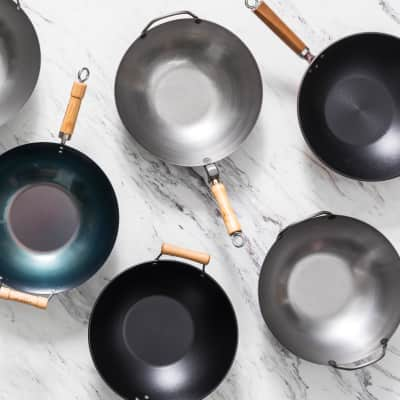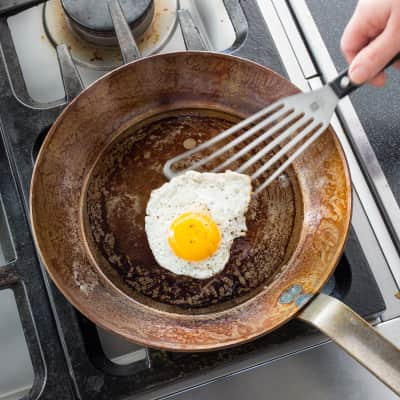Just like cast iron, carbon steel needs to be seasoned—this is the process that polymerizes fats heated in the pan and bonds them to the cooking surface, forming a coating that protects against rust and helps food release more easily.
How to Season Carbon-Steel Cookware
Published Apr. 3, 2020.
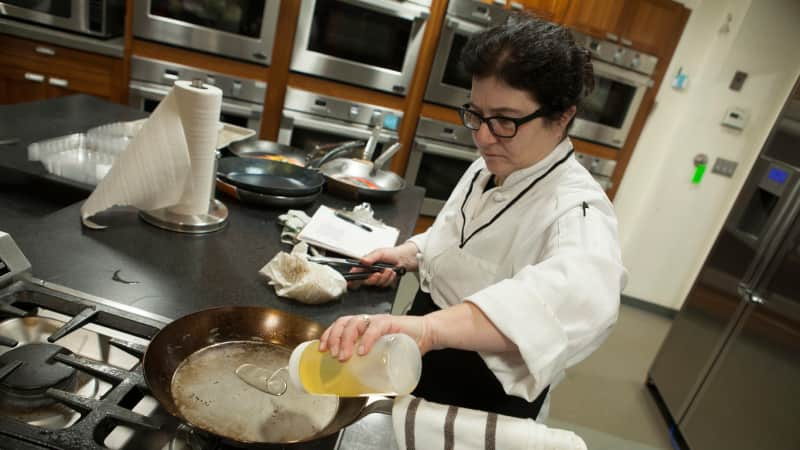
The good news is that seasoning carbon steel is quick and easy. It takes just a single application of oil for a new pan to be slick enough for cooking—or to repair a chipped patina. The hardest part is that a new carbon-steel pan may not look very seasoned for a long time.
Sign up for the Cook's Insider newsletter
The latest recipes, tips, and tricks, plus behind-the-scenes stories from the Cook's Illustrated team.
INITIAL SEASONING
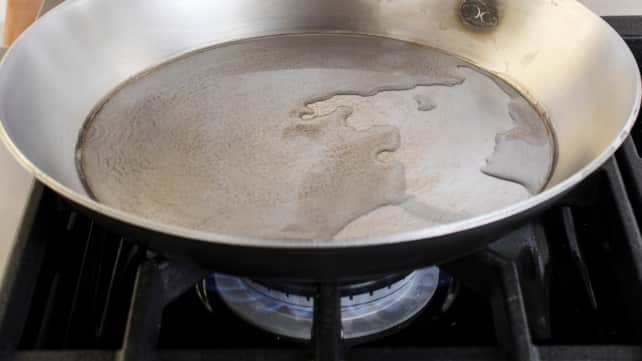
Add 1⁄3 cup oil, 2⁄3 cup salt, and the peels from two potatoes. (The salt will help scrub wax or grease from the surface, and the peels will regulate the heat, preventing spotty polymerization of the oil. You can also use one sliced onion instead of the peels.)
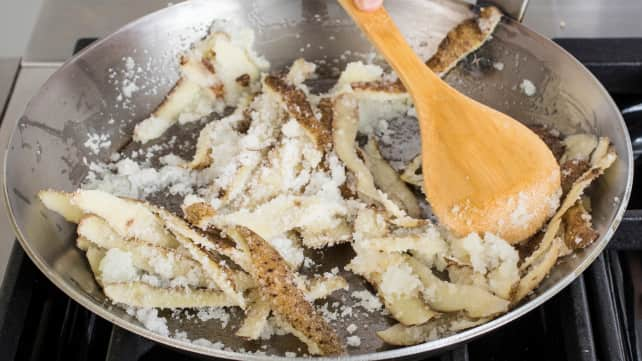
Cook over medium heat, occasionally moving the peels (or onion) around the pan and up the sides to the rim, for 8 to 10 minutes (if using an onion, cook for 15 minutes or until it turns very dark brown and almost burnt).

As you cook, you’ll notice the pan will gradually turn brown. Discard the contents, allow the pan to cool, and rinse it well. Dry the pan and return it to medium heat to finish drying. You are ready to cook. (Note: Adding cooking fat to the pan is still a must.) This method will work on any carbon-steel skillet or wok. If you experience sticking, repeat the method once.
The Best Woks
After years of preferring nonstick skillets to woks for making stir-fries, we decided to take a fresh look at this traditional pan.ROUTINE MAINTENANCE
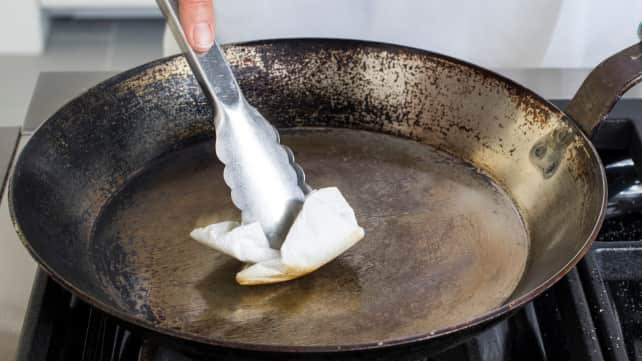
After you cook, rinse the pan with water, scrubbing gently with a soft-bristled brush or a sponge if necessary; avoid soap or abrasive scrubbers. Dry the pan thoroughly over a warm burner (but do not overheat; just heat a minute or two, until all visible moisture is gone). Add ¼ teaspoon oil to the cleaned skillet or ½ teaspoon oil to the cleaned wok and, using a wad of paper towels held with tongs, spread evenly over the surface. Wipe away as much oil as possible with a paper towel (excess oil won’t fully polymerize and will lead to tackiness). Continue to heat the pan, wiping away any beaded oil that forms, until the pan smokes (indicating oil breakdown). Let the pan smoke for 2 minutes, wiping away beaded oil with a paper towel. Turn off the heat and let the pan cool. (Note: If you are seasoning a wok, the sides will initially be less seasoned because they don’t get as hot as the bottom. With use, the upper portion will become more seasoned.)
The Best 12-Inch Carbon-Steel Skillets
What if one pan could do everything the best traditional stainless-steel, cast-iron, and nonstick pans can do—and, in some cases, even do it a little better?RESEASONING
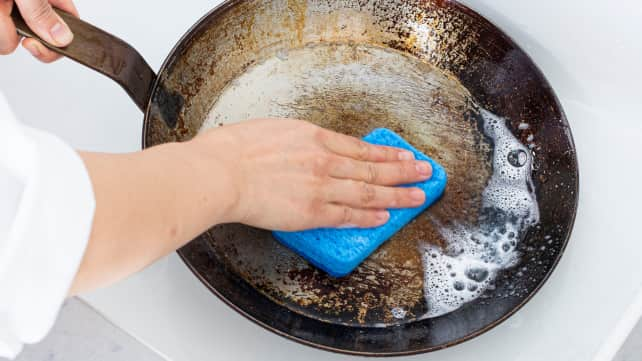
If the cooking surface feels bumpy or has tacky residue (caused by partially polymerized oil or food residue) or if the patina is chipped, scrub with a mixture of kosher salt and oil or a moderately abrasive sponge (it's also fine to use a little soap if the skillet or wok is tacky) until the patina feels even to the touch (the color does not need to be even). Repeat applying oil as directed in "Routine Maintanence" above.
